TI-nspire CX CAS vs. TI-84 Plus CE Comparison
Overview
TI-nspire CX CAS
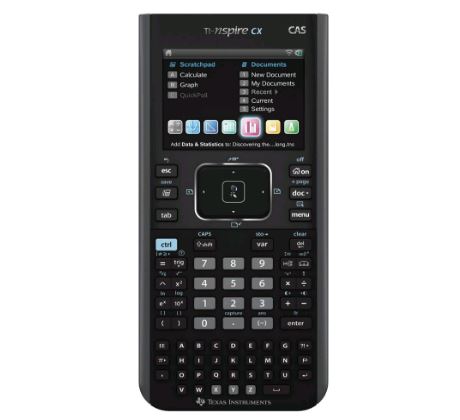
See on Amazon (commission earned)
The TI-nspire is not nearly as popular or widely used as the TI-84 Plus CE, but it should definitely not be overlooked. When it comes to calculation capabilities, the TI-nspire is arguably the best calculator you can get. For those who are not familiar, the "CAS" in its name stands for Computer Algebra System, this means that the calculator can perform operations involving variables, such as solving algebraic equations. It also means that you will be getting all of your answers in exact number format. But the capabilities don't end there I will talk more about them further into the review. But the TI-nspire still remains less popular due to the school system's unfamiliarity with it and the fact that it is harder to get to know how to use when compared with the TI-84 Plus CE.
TI-84 Plus CE

See on Amazon (commission earned)
The TI-84 Plus CE is becoming the standard for calculators in high school if it isn't already. The TI-84 Plus CE is the newest generation of Texas Instruments' TI-84 calculators. They have been the most popular calculators across high schools for almost as long as they have been around. When it comes to raw computing capability, this calculator doesn't stand a chance against the TI-nspire, the basic technology and operating system on this calculator has remained basically unchanged since 2004. However, this doesn't mean that you will be getting an inadequate calculator. The TI-84 still proves to be more than enough for almost all high school classes and beyond. It has been widely accepted in the educational community and it is still the most frequently bought calculator by schools and students.
From now on in this review, if I say TI-84 I am referring to the TI-84 Plus CE.
Usability
As I briefly mentioned before one of the big advantages the TI-84 has when it comes to usability is the fact that it has become so common in classrooms and other places. If you went to high school in the last 20 years and took any sort of math, it is likely that you used a TI-84 before. It is, of course, possible that you haven't used one of these calculators before. If that is the case and you are a student, surely one of your teachers (or peers) would be able to tell you how to do whatever it is you are trying to do with this calculator. If you are not a student, there are tons of online recourses (including this website) that can teach you how to use this calculator.
The TI-nspire hasn't been around for as long and isn't nearly as widely used as the TI-84. You will probably be able to find out how to do whatever it is you need to do on the TI-nspire, but it may take a little more digging and/or experimenting. Another factor is that the operating system on all TI-84 calculators hasn't changed much over the years whereas the nspire's has changed a considerable amount.
When you turn on the TI-nspire, you are greeted with a screen full of menus that you can select to start doing different tasks. When you turn on the TI-84, on the other hand, you are greeted with the familiar calculator screen ready for you to start making calculations. (TI-nspire on the left in the image below, TI-84 Plus CE on the right)
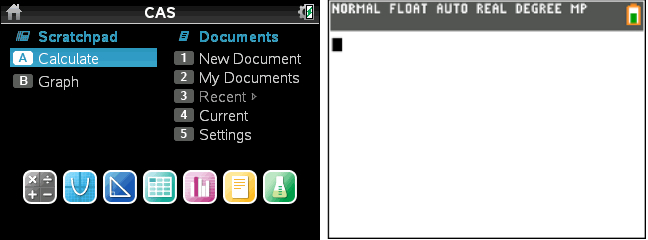
Navigation
In general, the nspire is a lot more confusing to get to know how to use. This is partly because of all the features it has and partly because of all the different menus it has. If you are looking for a specific feature you will probably have to dig around in menus a bit more on the TI-nspire than you would on the TI-84. On the TI-84 Plus CE if you are looking for a specific function chances are you will be able to access that function by pressing one button and maybe then having to scroll left or right or up or down.
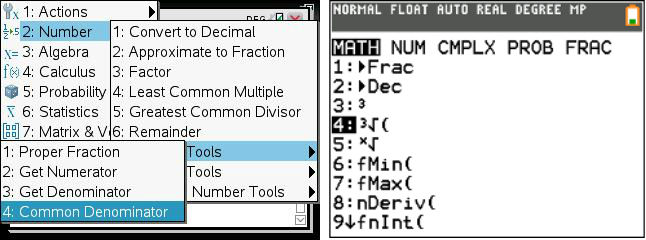
I'll refer to the image below as an example. If you want to do something as simple as evaluating the sine of an angle on the nspire you will have to open up a name by pressing the "trig" button and then scrolling to the function you want and then pressing [enter] to select it. Whereas the TI-84 has its own dedicated trig buttons that will do something like bring up sin( with the press of just one button. However, as you might notice from the picture, the TI-nspire has selections for csc sec and cot.
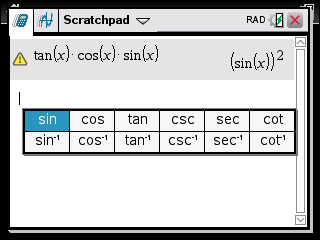
User Interface
Another thing that makes the usability of the TI-nspire less smooth is the way that the user interface is set up. If you want to perform a task outside of calculations, in most cases you will have to do that in a separate "document". For example, if you want to draw a shape in the geometry app you will have to create a geometry document. Creating the document doesn't involve that many extra steps. However, the document gets saved on to your calculator and you have to go in and delete it if you don't want things getting too cluttered up.
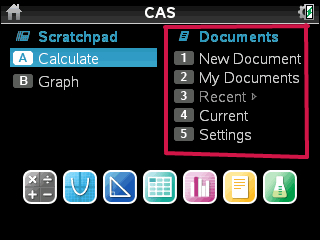
But you will probably be spending most of your time in the "Scratchpad" section of the calculator. This is where you can type in expressions like on any normal calculator without having to go through the whole document process. There is also a graphing section in the "Scratchpad" so don't worry about that being a hassle as well.
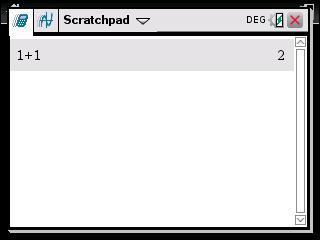
Overall the TI-nspire will take longer to figure out how to use, but you will have access to more features. Even so, the number of menus may be a deal breaker for some not because of the confusion it may cause but because it takes slightly more time to get to what you want. And if you are constantly having to press multiple buttons to access something as simple as a trig function, that time can add up and become annoying.
Usability goes to the TI-84 Plus CE.
Capabilities
As you've probably already guessed by this point in the review, the TI-nspire is the calculator that will be able to do the most impressive computing, and the TI-84 is the calculator that is user-friendly, trustworthy and convenient. But in this next part of the review, I hope to show you what these two devices are capable of and help you decide if putting up with some confusing UI is worth the extra features.
The Computer Algebra System (CAS)
This is probably the most exciting feature of the TI-nspire. The CAS means that the nspire is able to evaluate equations and expressions with variables, factor, and give exact simplified answers. To give you an idea of the kind of stuff this calculator can do I'll show you some screenshots below. I'll also say that if you had this calculator while taking an algebra 2 class, it would be able to do A LOT of the homework and tests for you. If you want a more detailed description of the capabilities of the TI-nspire, check out our full individual review.
Solving Algebra Equations...
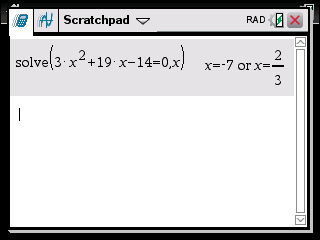
Factoring or Expanding Expressions...
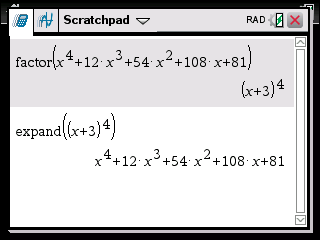
Simplifying Expressions... All answers will be given in exact simplified form unless you press [ctrl] [enter] to get a decimal approximation like on a normal calculator.

What you see above is just the beginning of what the nspire can do in terms of calculation. The TI-84 Plus doesn't stand much of a chance when it comes to this category. It can't factor expressions, and it can solve for variables in specific cases. It also doesn't give you answers in exact form, It can't even simplify radicals (unless you use one of our TI-84 Programs). But The TI-84 is still more than enough to get you through high school and most college math/science classes. Texas Instruments designed the TI-84 for education, so it will have all the features you really need. If you want a more thorough look at the capabilities of the TI-84 Plus CE, check out our full individual review.
Apps
When it comes to these calculators doing other things besides just making calculations, The TI-nspire CX CAS has the TI-84 Plus CE beat here too. The nspire was designed to be more than just a great calculator, it was also designed to collect and store data. If you pair your nspire with products from Vernier it can become a data collection device for science classes. You can store and analyze the data in the "Vernier DataQuest" app already on the nspire.
Even If you don't plan to do any data collection, there are still some apps you might find useful. The Geometry app lets you draft complex or simple geometric shapes, as well as add live angle and length measurements.
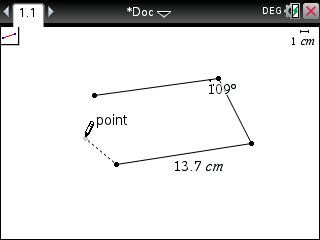
There is also a fairly capable and usable spreadsheets app.
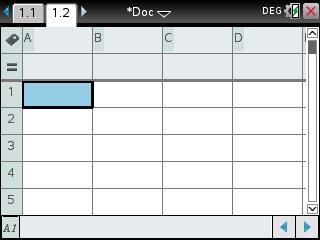
There is also an app for graphing data that you enter manually or collect through DataQuest.
And finally, there is a "Notes" app which is a basic text editor that can do a bit more than just store text.
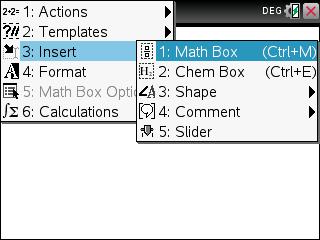
The TI-84 Plus CE has much less to offer in this category. There is an "apps" button on the TI-84, which takes you to a simple list of 12 apps. These apps do things like graph conic sections and find roots, these.

This isn't a very well known part of the calculator meaning that not many people know these apps exist, so they don't use them. However, some of them can be pretty useful. Most of the things that the apps on the TI-84 do can already be done directly from the scratchpad on the TI-nspire.
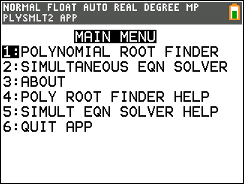
So if you want to be able to do more complex calculation tasks, the TI-nspire is the better option, but not unless you want to create your own applications...
Programming
This is about the only place under capabilities that the TI-84 Plus CE pulls ahead of the Ti-nspire. The TI-84 has the best programming interface out of all graphing calculators. The TI-84 allows you to create programs that can do things that you wouldn't normally be able to do on the TI-84. For example, the TI-84 doesn't simplify radicals, but we have a program on this website that you can download on to your TI-84 to give it the ability to simplify radicals.
You can also make games and other programs that take advantage of the "Draw" capabilities of the TI-84. Learning how to program the TI-84 is relatively easy, but it will take some time. The good thing is there are plenty of online recourses to help you figure it out. If you don't feel like learning how to program the TI-84 but you still want the extra functionality programs give you, you can always check out our programming page to download TI-84 programs for free.

The Texas Instruments website says that the nspire has programming capabilities, but we have found that they fall short when compared to the TI-84. When they say you can program the calculator they really mean that you can create simple functions. You are able to create simple functions that take in a few user inputs (just numbers) and then output an answer. This is somewhat useful especially if you have a simple task that you need to do over and over again. But it is less convenient than you might think because you cant access the programs from anywhere on the calculator like you can on the TI-84. You have to be in the same "calculator document" as the program, and you can't access the saved programs from the scratchpad.
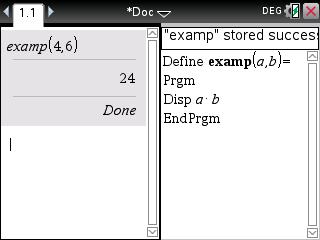
Hardware
Screens
Technically the two have the exact same screen resolution or 320 x 240, but the TI-nspire takes much better advantage of all the pixels. As you can see from the image below the expressions typed out on the nspire look much nicer and more like something you might see on a computer screen.

Both calculators also have a color display. This may seem unnecessary on a graphing calculator, but it's useful on the nspire to be able to differentiate between all the things that can be on the screen at the same time, like menus and different sections of apps. It's also especially nice for the graphing apps on both calculators. Having multiple lines graphed at once and quickly being able to tell what is what is very convenient.

Buttons and Controls
The button layout on the TI-84 is logical and most people will probably be familiar with it for two reasons. (A) it hasn't changed much over the last 20 years from other Texas Instruments calculators. (B) it is similar to most other Texas Instruments scientific calculators.
The button layout on the nspire, on the other hand, is very different and unlike most other calculators. At the top, you have a giant directional pad (which we'll talk about later) and all of the different control buttons like the menu, home, and escape buttons. In the middle, you have a number pad surrounded by a limited number of operation and function buttons. (This is because most of the extra functions and operations are selected via a menu, on screen, after pressing one of these buttons.) Then at the bottom, there is a keypad with all a button for each individual letter with some extra characters. This is convenient because there are a lot of functions that you need to type out in order for the calculator to do something like "solve" to solve an algebra equation.

You may notice that the keyboard isn't in QWERTY format even though it looks like it could be. We believe this is so that the College Board will still allow the calculator to be taken on the SAT* and other standardized tests. The College Board most likely made this rule so they would have test takers taking notes about the test during the standardized test because they could type faster with a QWERTY keyboard.

Trackpad
The TI-nspire does have an extra control feature that the TI-84 doesn't have and that is a trackpad and cursor. The cursor/trackpad work like one on a laptop and the trackpad is located on top of the large directional pad just below the screen (see image below). The trackpad works well enough, but don't expect the responsiveness of a MacBook. It might seem like the whole cursor thing is unnecessary, and it isn't totally necessary, you can do basically everything without it. Although it would be pretty hard to live without it in places like the geometry app.
Conclusion
Overall the TI-nspire CX CAS has an abundance of features and capabilities that will allow you to do much less work on paper, and even allow you to forget how to do some very advanced things like factoring. But all this comes at the cost of usability which is where the TI-84 Plus CE shines. Also, keep in mind that the nspire isn't allowed on the ACT* whereas the TI-84 is (both are allowed on the SAT*/PSAT*. (See the chart below for more on regulations.)
TI-nspire CX CAS
- PSAT*
- SAT*
- Math AP* Exams
TI-84 Plus CE
- PSAT*
- SAT*
- ACT*
- Math AP* Exams
- IB*
See next...
TI-nspire CX CAS vs. HP Prime >>
Full Individual Review of The TI-nspire CX CAS >>
Full Individual Review of The TI-84 Plus CE >>
Contact Us
If you have any questions please don’t hesitate to get in touch by DMing us on Instagram, emailing us at mathclasscalculator@gmail.com or, leaving a comment below.
We are a participant in the Amazon Services LLC Associates Program, an affiliate advertising program designed to provide a means for us to earn fees by linking to Amazon.com. This means that we get a small commission any time an item is purchased through one of our links at no extra cost to the buyer. Please note that we have used all the products that are reviewed on this website and our goal is to provide good content and honest reviews.


